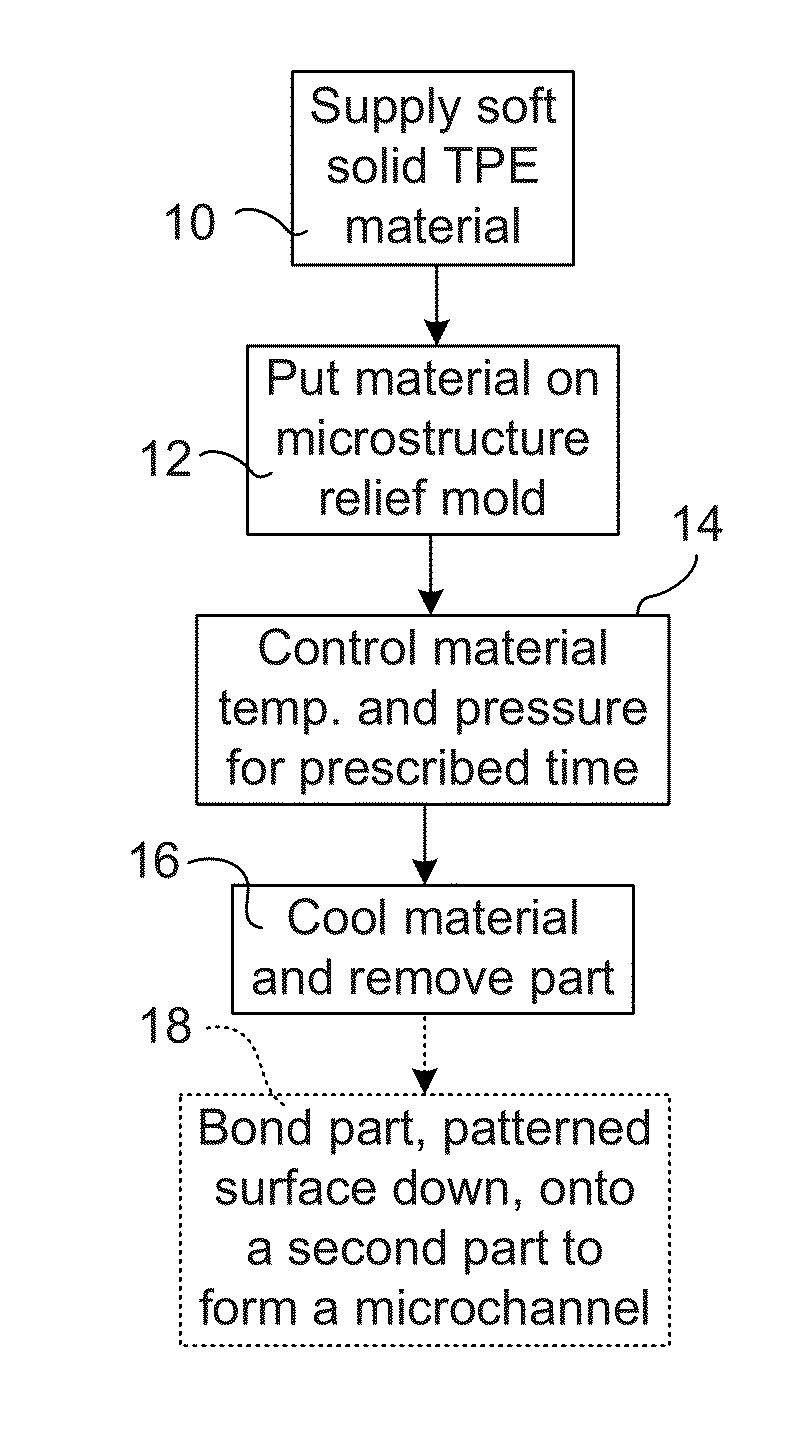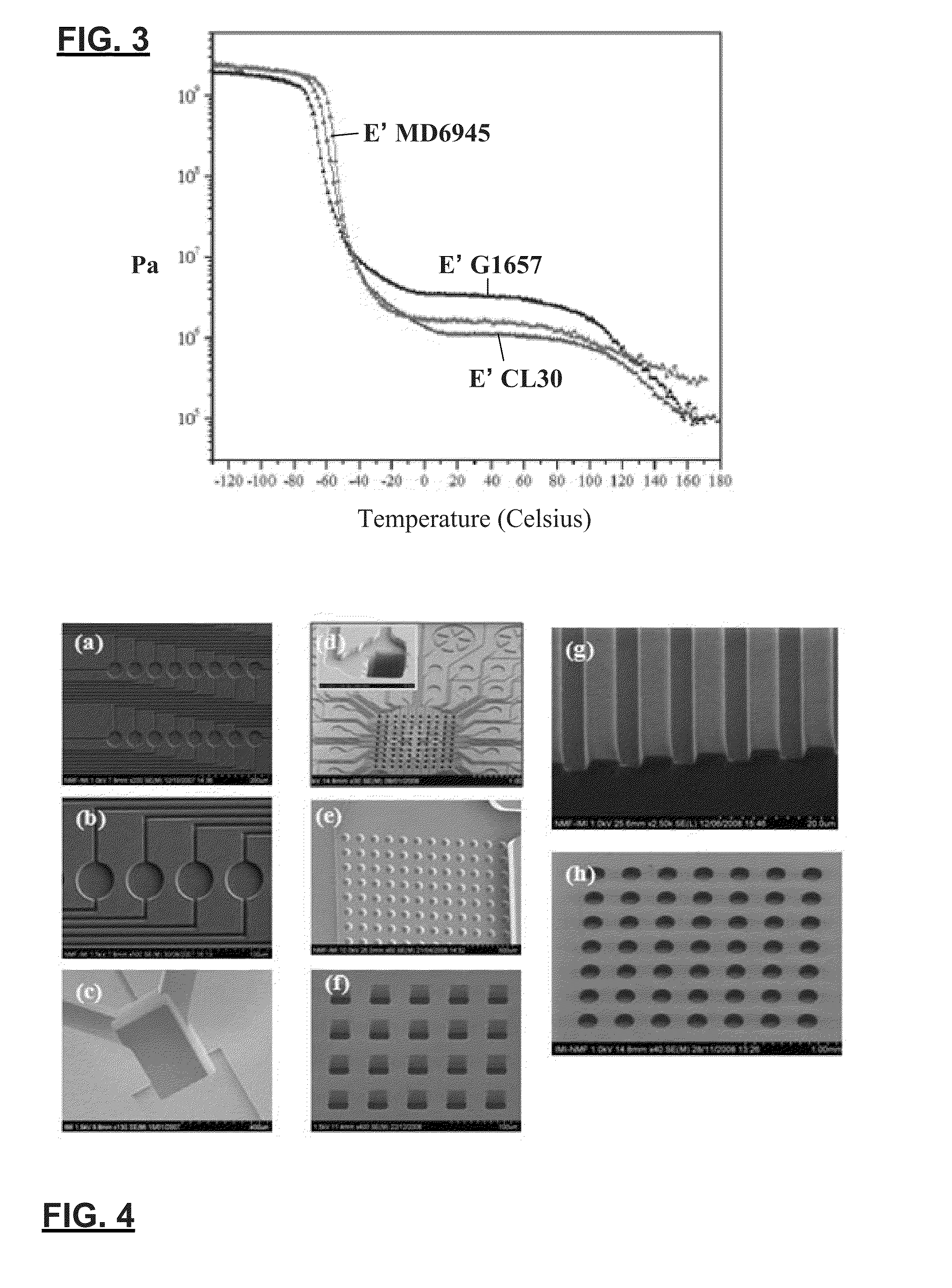Microfluidic Device, Composition and Method of Forming
a microfluidic device and composition technology, applied in the field of composition and forming of matter for forming microfluidic devices, can solve the problems of tpe gels having problems retaining mineral oil or other extenders/solvents, shrinkage of slabs, and other problems, to achieve the effect of reducing air bubble entrapment, low temperature, and low pressure-time patterning
- Summary
- Abstract
- Description
- Claims
- Application Information
AI Technical Summary
Benefits of technology
Problems solved by technology
Method used
Image
Examples
examples
[0085]Applicant has demonstrated that solid soft TPE films, such as those formed of styrenic block copolymers including styrene-ethylene-butylene-styrene (SEBS) and SIBS (styrene) / (isobutylene) / (styrene)) for one part and non blocks polymers such as ethylene vinyl acetate (EVA) polymer, can be patterned with high fidelity microfluidic channels using low temperature and low pressure-time thermoforming, and further that solid soft TPEs have advantageous properties in terms of bonding. Styrenic block copolymer elastomer is composed of diblock, triblock, star block, other multi-block structures, or blends of these structures.
[0086]Soft Solid TPE Materials and Characterizations
[0087]The experiments focused mainly on soft solid styrenic block copolymer TPEs. Three commercially available grades of styrene / ethylene / butylene / styrene (SEBS) block copolymers (Versaflex SEBS CL30 from GLS Corp, McHenry, Ill., USA; and SEBS MD6945 and G1657 from Kraton Polymers, Houston, Tex., USA) and one styre...
PUM
| Property | Measurement | Unit |
|---|---|---|
| temperature | aaaaa | aaaaa |
| pressure | aaaaa | aaaaa |
| wt. % | aaaaa | aaaaa |
Abstract
Description
Claims
Application Information
 Login to View More
Login to View More - R&D
- Intellectual Property
- Life Sciences
- Materials
- Tech Scout
- Unparalleled Data Quality
- Higher Quality Content
- 60% Fewer Hallucinations
Browse by: Latest US Patents, China's latest patents, Technical Efficacy Thesaurus, Application Domain, Technology Topic, Popular Technical Reports.
© 2025 PatSnap. All rights reserved.Legal|Privacy policy|Modern Slavery Act Transparency Statement|Sitemap|About US| Contact US: help@patsnap.com



